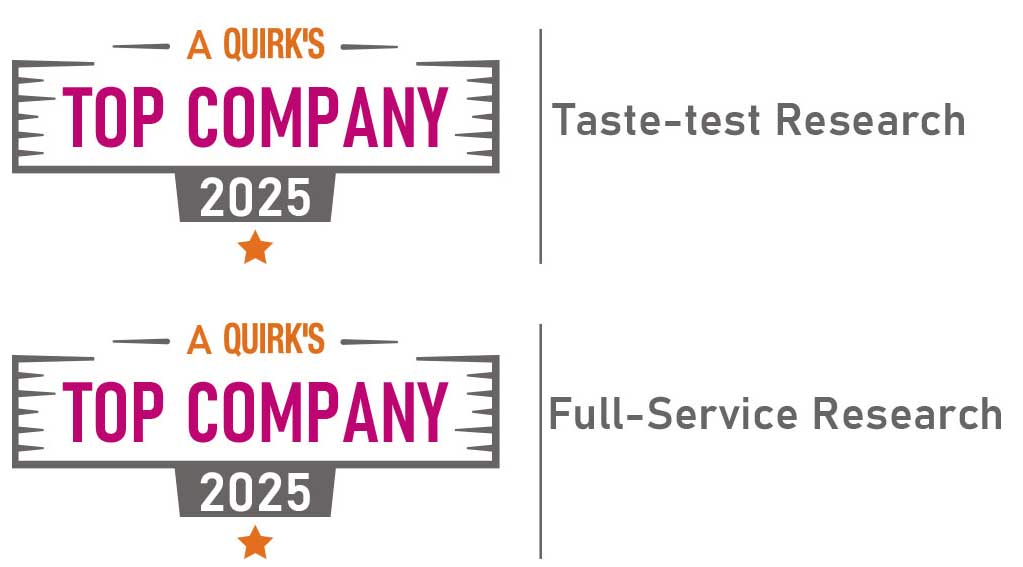Authored by Keren Novack, President at Curion
 Think back to a nostalgic product, a favorite cereal, snack, or household staple, that either feels “different” today or is simply no longer available. These beloved products that consumers have trusted for generations are now facing a crisis. Some are now being passed over by consumers, others deteriorating in quality due to rising costs and ingredient changes, while others now contain ingredients under scrutiny from the government.
Think back to a nostalgic product, a favorite cereal, snack, or household staple, that either feels “different” today or is simply no longer available. These beloved products that consumers have trusted for generations are now facing a crisis. Some are now being passed over by consumers, others deteriorating in quality due to rising costs and ingredient changes, while others now contain ingredients under scrutiny from the government.
While some still exist, usually in altered form, others have already disappeared from store shelves altogether. Take Fruit Stripe gum, for example. After 54 years, this colorful gum product was discontinued due to changing consumer preferences and purchasing patterns. Or how about Kirkland’s Signature Chocolate Chips, which Costco discontinued due to rising cocoa costs? And the iconic Choco Taco? Klondike dropped it amid increased demand for other products.
Why Are These Products at Risk? The Triple Threat Facing Legacy Brands
These trends aren’t surprising when viewed more closely. A combination of shifting consumer preferences and rising inflation is now being further amplified by the Make America Healthy Again (MAHA) initiative intensifying regulatory pressure from government agencies.
To remain relevant, today’s brands must stay attuned to the legacy brands triple threat: evolving consumer expectations, protect product quality amid rising costs, and proactively navigate an increasingly complex regulatory landscape.
1. Shifting Consumer Behavior
The shifting of consumer behavior has been ongoing for years, but now we’re seeing a bigger split in what people want. Some consumers are going for healthier, often pricier options, while others are focused on getting the best value for their money, leaving less room for traditional, “middle-class” brands. For example, traditional boxed mac and cheese reported losing market share in both directions. Driving that are premium brands like Goodles whose sales have doubled, and private label alternatives priced at less than half the cost whose sales are up 6%.
We’re seeing many struggling middle-market brands attempt either premiumization with ‘artisanal’ offerings or value engineering through cost-cutting measures, though many fail to establish authentic credibility in either direction without truly understanding what consumers value. When equipped with the right insights, brands can reclaim and reinvigorate these middle-market favorites, improving their quality and aligning with modern consumer needs.
2. Rising Costs and Inflation
At the same time, brands are grappling with higher ingredient and production costs. To manage margins, some are quietly replacing premium ingredients with lower-cost alternatives. Over time, these small changes chip away at consumer trust, creating a “slicing the salami” effect where each compromise adds up, leaving almost no salami in the slice.
Brands must be cautious not to let rising costs compromise their product promise. The product itself is the delivery of that promise – alter it too much, and the brand loses its credibility. Incremental product changes create a noticeable drift away from what consumers originally loved. These small compromises accumulate, disappointing loyal customers and accelerating brand decline as they seek alternatives that match their remembered experience.
3. Government’s Ingredient Scrutiny and Regulatory Pressures
Most recently adding to this, the government is paying much closer attention to what’s in our food, especially with the MAHA initiative, led by Health and Human Services Secretary Robert F. Kennedy Jr.
This initiative aims to tackle the national health crisis by prioritizing preventative care and examining food production and nutrition. The FDA and other regulatory bodies are intensifying scrutiny on ingredients that have been in trusted products for years. Recent bans, such as Red 3 dye, are some of the latest to reflect growing concerns about food safety and health.
“There is increased consumer knowledge and awareness of what ingredients are in their products, which is changing their focus. Add in the discussions surrounding initiatives like MAHA, and we're definitely seeing some brands take proactive steps in setting aside funding for research and getting their leadership team on board with redevelopment.”
Katie Fellows, Curion’s SVP of Strategic Insights
West Virginia recently enacted the nation’s first broad ban on synthetic food dyes, implementing the strictest food additive law in the US. California had already banned Red Dye among other ingredients, and according to the Environmental Working Group, 23 additional states are seeking similar bans on dyes and additives, signaling a bipartisan push toward a safer food system.
What This Means for Brands
Navigating the legacy brands triple threat of shifting consumer expectations, inflationary pressures, and mounting regulatory requirements is no small feat. For many brands, there’s a growing fear of the “criminalization of standard ingredients” those long relied upon components that are now being flagged as problematic. Reformulating products to comply with new standards or evolving consumer preferences is often costly and can compromise the very elements that made a product successful such as taste, texture, or functionality.
The risk? Reformulations that miss the mark can damage consumer trust, erode brand equity, and create a ripple effect across production, marketing, and supply chains.
At the same time, the cost of inaction is high. Brands that delay change could find themselves scrambling to catch up, or worse, phased out by more agile competitors. Some companies are taking a “wait and see” approach, holding off on major changes until regulatory guidelines are more clearly defined. But that approach can be risky in a climate of heightened transparency and rapidly shifting consumer sentiment.
The restaurant industry, in particular, faces unique challenges. Unlike packaged goods, restaurants don’t typically provide ingredient labels at the point of sale. But that’s starting to change.
“The difference between what I see in our restaurant clients compared to the food and beverage CPG sector is that we don’t have ingredient statements on the back of every burger that everyone is ordering. So, it’s not as transparent…yet. But we’re already seeing some restaurants lead with the types of oils they use or the sourcing of their ingredients—because consumers are asking more questions.”
Rachel Buss, Curion’s VP of Strategic Insights
Ultimately, this moment presents both a challenge and an opportunity. Brands that proactively address these pressures with thought, transparency, and a focus on delivering excellent products that align with shifting consumer values can differentiate themselves and build strong loyalty.
What This Means for Consumers
Consumers are becoming more informed, more vocal, and more demanding. They expect higher-quality products with greater transparency and cleaner labels. Many are scrutinizing ingredient lists, actively seeking healthier alternatives, and holding brands accountable.
Leading the charge are the “crunchy moms” – parents who have embraced natural living, holistic health, and clean eating. They’ve been known to question additives, processed foods, and mainstream norms for years. From homemade granola to label-reading and natural remedies, their nuanced mindset is now shaping the expectations of a broader consumer base – being “crunchy” is now going mainstream, and it’s cool.
The MAHA initiative will only accelerate this trend by turning up the heat on processed foods and outdated formulations.
The Path Forward: Focus on Product
The stakes are high with the looming legacy brands triple threat. For CPG brands, restaurants and food service products, the path forward lies in re-committing to their product by prioritizing better ingredients, improved formulations, and consumer-led renovation and innovation.
Curion is uniquely positioned to guide brands through these transformations. With deep expertise in product testing and consumer insights, Curion helps brands:
- Optimize product offerings based on shifting consumer behavior: Understand how consumers perceive premium, value, or reimagined “middle-class” offerings by testing different formulations, features, and expectations around healthier, less processed options plus the tradeoffs consumers are willing to make.
- Use product insights to navigate cost and ingredient shifts: Evaluate how ingredient substitutions and price changes affect perceived quality to ensure products still deliver on their promise amid inflation.
- Refine product reformulations: Test consumer reactions of changes in taste, texture, and experience caused by ingredient bans or scrutiny, reducing risk and supporting compliant product relaunches without sacrificing consumer acceptance.
The products we grew up with may be at risk, but brands that double down on quality, trust, and relevance can not only survive, but can thrive in today’s shifting landscape.
Curion specializes in delivering impactful insights to the world’s top CPG companies, helping them develop winning, repeatedly purchased products. Curion’s deep data-driven product insights, sensory expertise, and state-of-the-art consumer centers enable them to uncover responses to critical client objectives. With over five decades of experience in the product testing industry, Curion is dedicated to guiding clients with their proprietary XP Xperience Performance platform, connecting brands to consumers at every step.
An innovator in the industry, Curion recently developed a groundbreaking benchmarking product testing method, the Curion Score™, which has become a trusted and sought after tool within the industry. As one of the largest product and consumer insights companies in the U.S., Curion has built a reputation for excellence and trust among the world’s leading consumer brands. Curion’s commitment to innovation and expertise, coupled with a passion for delivering actionable insights, makes Curion a valuable partner for companies looking to develop and launch successful products.
